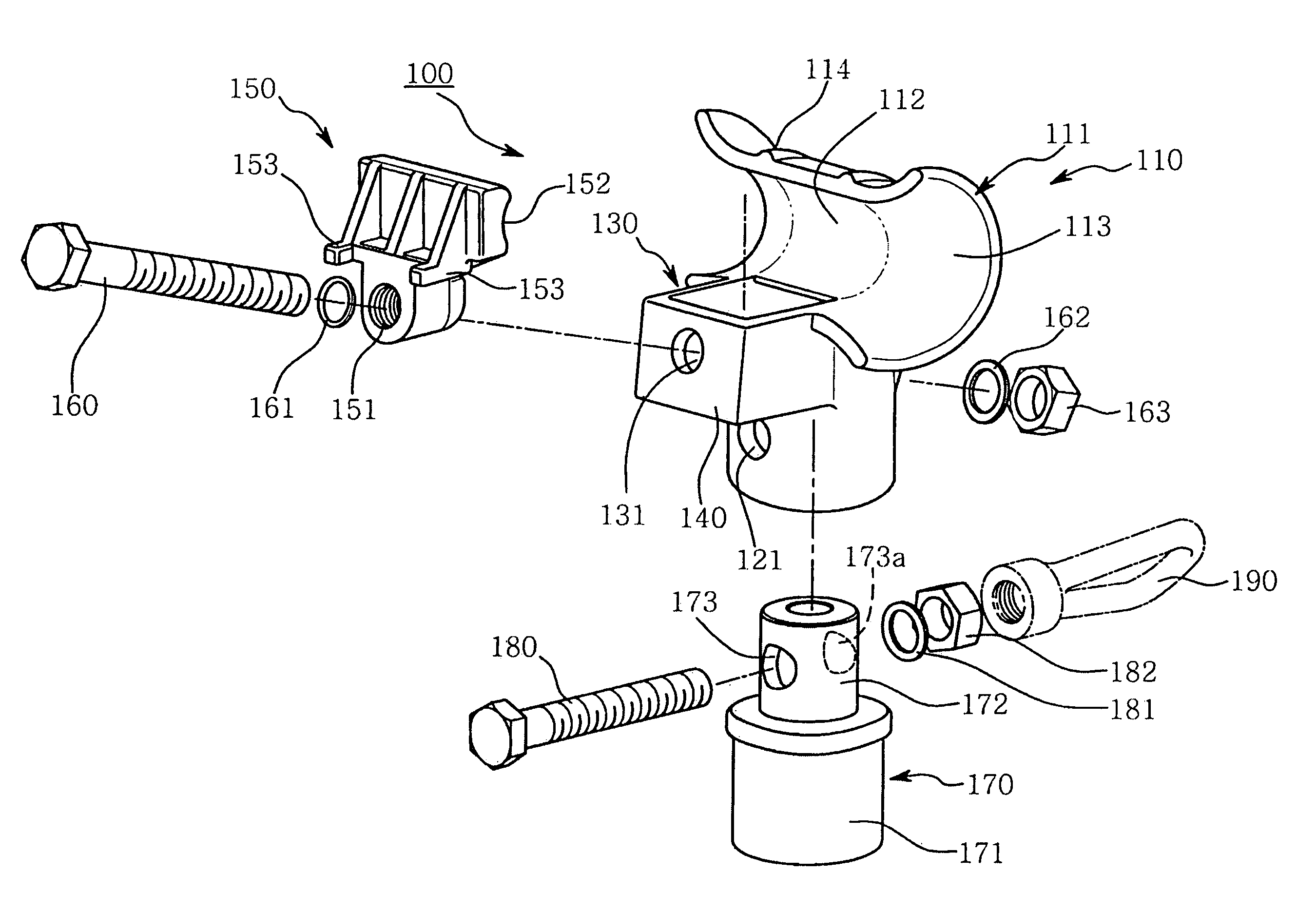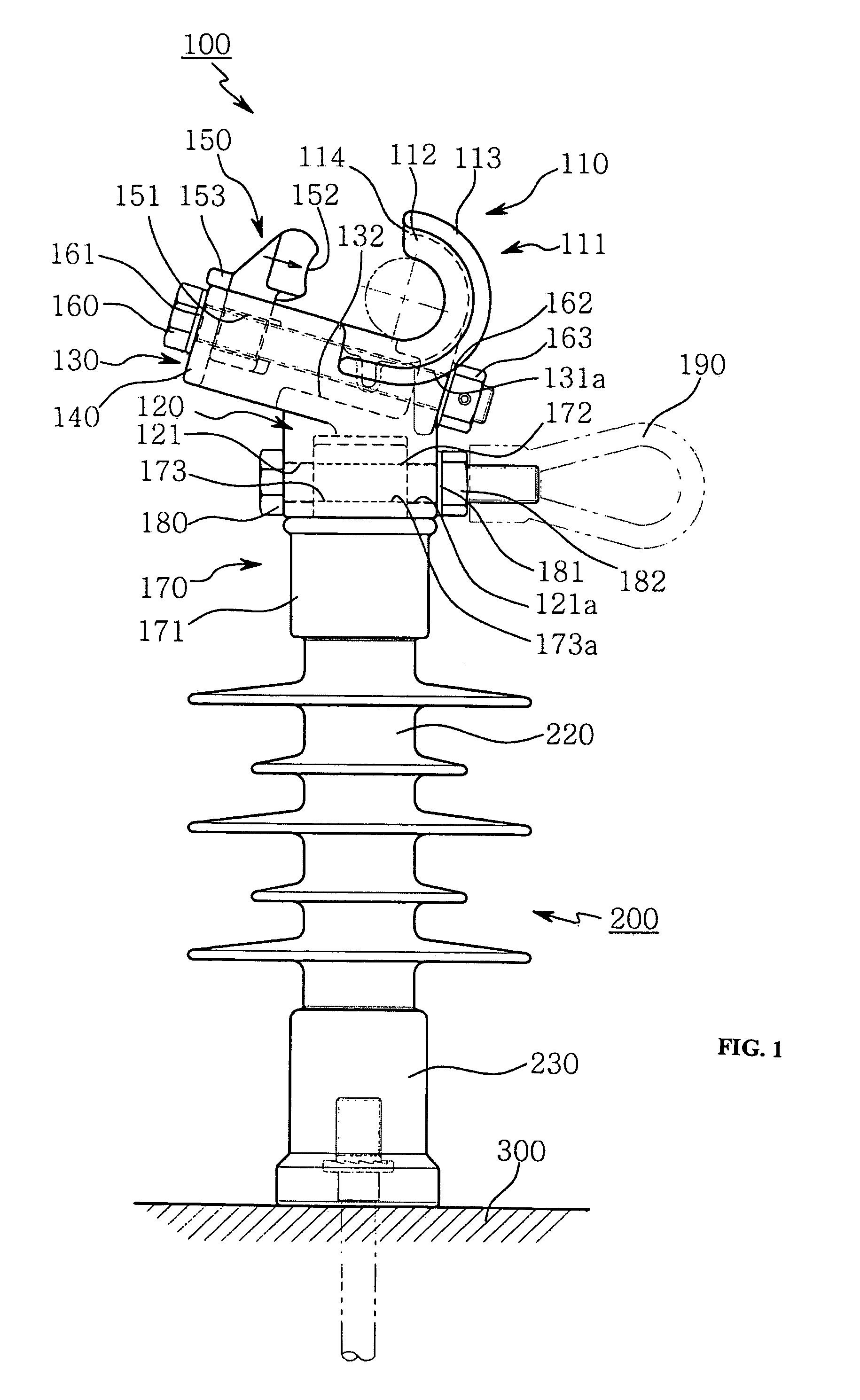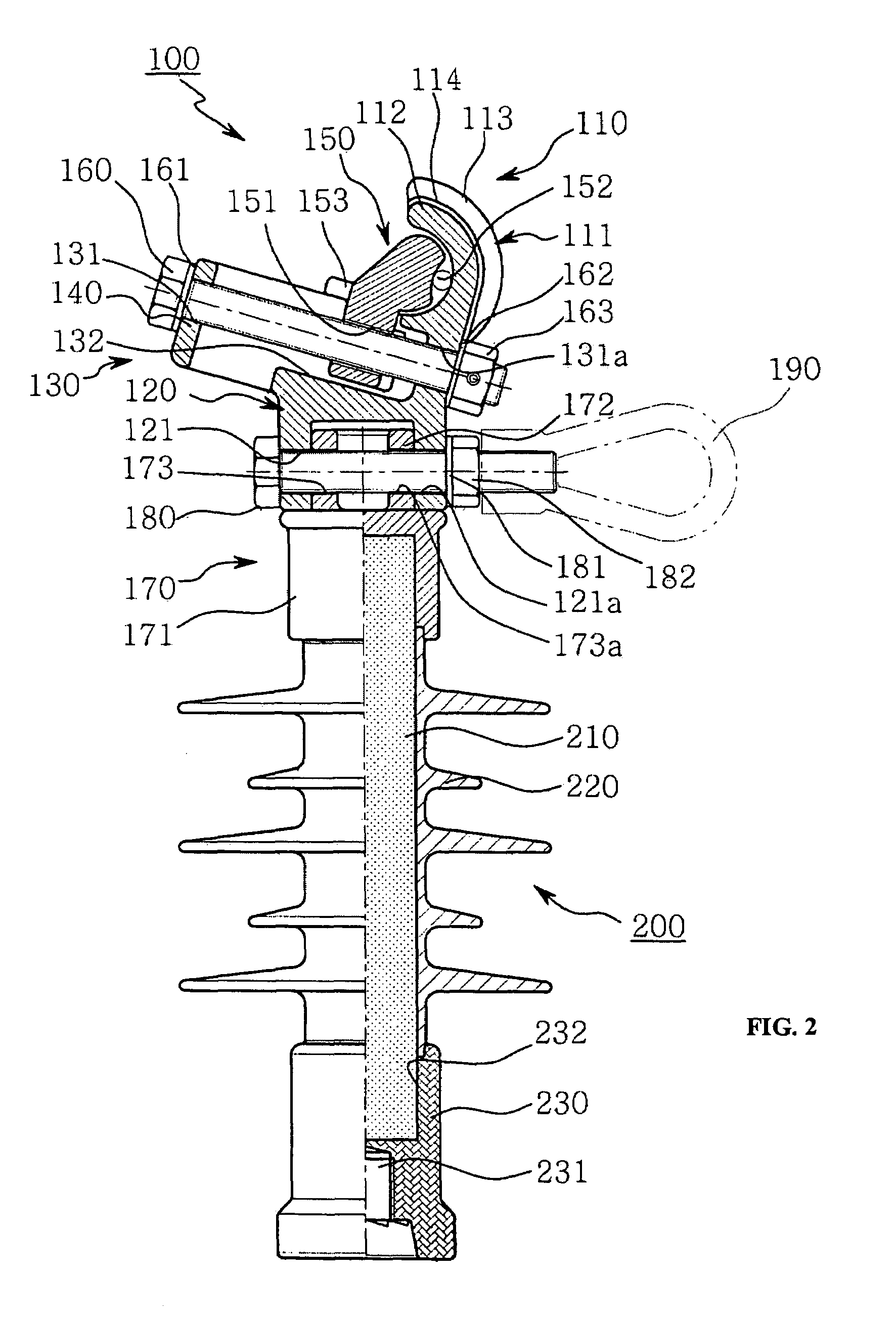Electrical power line insulator with end clamp
a technology of power line insulators and end clamps, which is applied in the direction of snap fasteners, cable terminations, machine supports, etc., can solve the problems of insulator vibration, unsatisfactory safety devices for preventing bolts from coming loose, and the bolt must be securely tightened, so as to reduce the risk of breakdown, minimize accidents, and minimize corrosion during use
- Summary
- Abstract
- Description
- Claims
- Application Information
AI Technical Summary
Benefits of technology
Problems solved by technology
Method used
Image
Examples
Embodiment Construction
[0034]As shown in FIGS. 1 to 5, an electrical power line insulator has an end clamp 100 fastened to the upper end of an insulator housing 200 using a bolt 180 and a nut 182, so that it is possible to easily separate the end clamp 100 and the insulator housing 200 from each other.
[0035]The insulator housing 200 includes a post 210 in the form of an FRP rod. The post 210 is coupled to the insulator housing 200 by insert forming using insulating rubber 220. The post 210 is inserted into the insulator housing 200 such that both sides of the post, that is to say the upper and lower portions of the post 210, protrude therefrom by a predetermined distance. An upper fitting part 170 and a lower base fitting part 230 are assembled with the upper and lower portions of the post 210.
[0036]The post 210, the insulating rubber 220, and the base fitting part 230 of the insulator housing 200 are equivalent to those of a conventional insulator housing. The insulating rubber 220 may have a plurality o...
PUM
| Property | Measurement | Unit |
|---|---|---|
| distance | aaaaa | aaaaa |
| shape | aaaaa | aaaaa |
| electrical | aaaaa | aaaaa |
Abstract
Description
Claims
Application Information
 Login to View More
Login to View More - R&D
- Intellectual Property
- Life Sciences
- Materials
- Tech Scout
- Unparalleled Data Quality
- Higher Quality Content
- 60% Fewer Hallucinations
Browse by: Latest US Patents, China's latest patents, Technical Efficacy Thesaurus, Application Domain, Technology Topic, Popular Technical Reports.
© 2025 PatSnap. All rights reserved.Legal|Privacy policy|Modern Slavery Act Transparency Statement|Sitemap|About US| Contact US: help@patsnap.com



